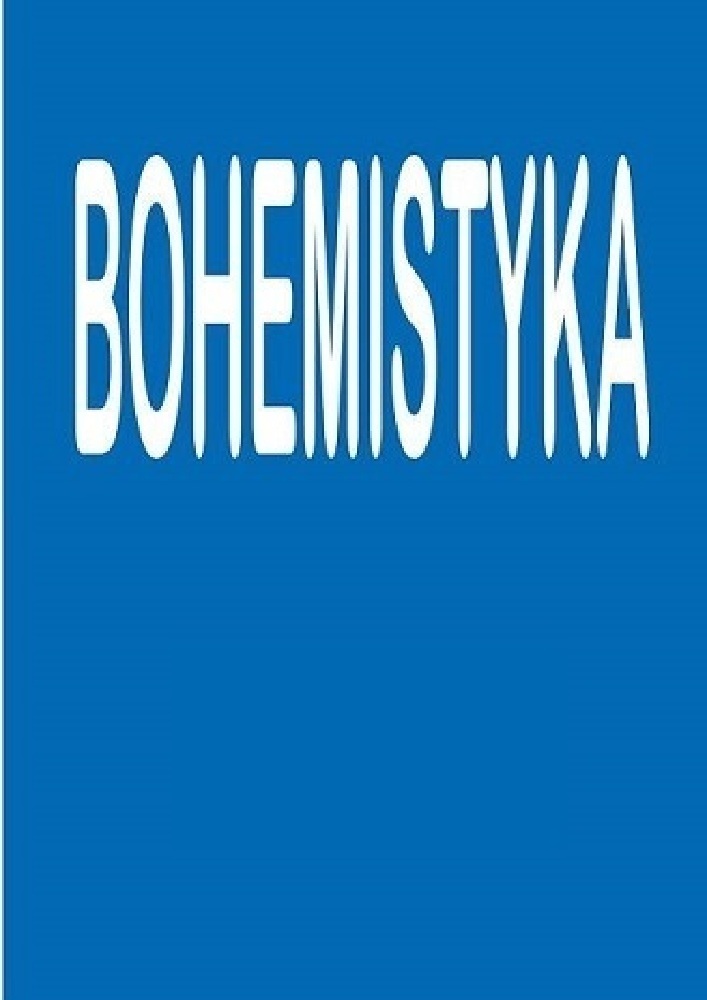Abstrakt
The author of this article analyses the way in which dance and the dancer function within the prose works of Milan Kundera. Preceded by an introduction which analyses the figure of homo saltans from a cultural perspective, this review of the topic of dance (understood phenomenologically) presents four literary aspects in which it reveals itself. These perspectives are not conflicting, but neither are they complementary. The first relates to ritual rites of dancing in a circle, and their (crooked) reflection can be seen in the socio-political experience of the 20th century. The second presents dance as a narrative element, which asks questions about its own nature, and therefore has an autotelic and universalising character. The third aspect presents a metaphorical understanding of dance movement, while the fourth relates to philosophies of the dance and the dancer, as proposed by one of the protagonists in Slowness, leading this persona away from aesthetics towards the experience of public life. According to the author of this article, dance is used by Kundera to discover more interesting layers of the human condition, but much here depends on the reader.
Bibliografia
Source shortcuts
BLF M. Kundera, The Book of Laughter and Forgetting, trans. M.H. Heim, Penguin Books, Great Britain, 1983.
DAC M. Kundera, Dialogue on the Art of Composition, interview conducted by C. Salmon, in: M. Kundera, The Art of the Novel, trans. L. Asher, Faber and Faber, Great Britain, 1990.
LL M. Kundera, Laughable Loves, trans. S. Rappaport, Faber and Faber, Great Britain, 1991.
S M. Kundera, Slowness, trans. L. Asher, Harper Perennial, NY USA, 1997.
WP M. Kundera, Walc pożegnalny, trans. P. Godlewski, Warsaw 1990.
Béjart M., 1991, Przedmowa do książki Rogera Garaudy „Taniec życia”, trans. K. Stefaniak, in: W. Tomaszewski, Człowiek tańczący, Warsaw.
Byczkowska 2012, Ciało w tańcu: analiza socjologiczna, Łódź.
De Marinis M., 2013, Performans i teatr. Od aktora do performera i z powrotem?, trans. E. Bal, in: Performans, performatywność, performer. Próby definicji i analizy krytyczne, ed. E. Bal, W. Świątkowska, Kraków.
Domańska E., 2007, “Zwrot performatywny” we współczesnej humanistyce, „Teksty Drugie”, no. 5.
Dzikowski S., 1925, O tańcu. Rozważania kulturalno-obyczajowe, Warsaw.
Garaudy R., 1991, Taniec życia, trans. I. Turska, in: W. Tomaszewski, Człowiek tańczący, Warsaw.
Graczyk E., 1994, O Gombrowiczu, Kunderze, Grassie i innych ważnych sprawach, Gdańsk.
Grotowski J., 1990, Performer, in: idem, Teksty z lat 1965–1969, selected and edited by J. Degler, Z. Osiński, Wrocław.
Illg J., 1992, W kręgu powieści Milana Kundery, Kraków.
Kotliński 2016, Tańce polskie: suita historycznoliteracka, Olsztyn. „Kultura Współczesna” 2011, no. 3: Ciało tańczące, ed. L. Bieszczad.
Kulturowy obraz tańca, 2012, ed. J. Bujak-Lechowicz, Szczecin.
Lange R., 2009, O istocie tańca i jego przejawach w kulturze. Perspektywa antropologiczna, Poznań.
Lodge D., 1992, The Art of Fiction, Penguin Books USA.
Lucian of Samosata, 1951, Dialog o tańcu, trans. J.W. Reiss, Warsaw.
Nowy taniec. Rewolucje ciała, 2012, ed. W. Mrozek, Warsaw.
Ong W.J., 2002, Orality and Literacy: The Technologizing of the Word. Online: http://dss-edit.com/prof-anon/sound/library/Ong_orality_and_literacy.pdf.
Pomarańska-Szumska A., 1999, Jak tańczy współczesna poezja? Taniec jako tworzywo i forma wiersza, ed. E. Czaplejewicz, Warszawa.
Reiss J.W., 1951, Wstęp, in: Lukian z Samosate, Dialog o tańcu, trans. J.W. Reiss, Warszawa.
Rey J., 1958, Taniec. Jego rozwój i formy, trans. I. Turska, Warsaw.
R.Z. [R. Zimand], 1984, Ten cholerny Kundera, „Almanach Humanistyczny”, no. 1–2.
Taniec i literatura, 2002, red. E. Czaplejewicz, J. Potkański, Warszawa.
Taniec w literaturze polskiej XIX i XX wieku, 2012, ed. S. Karpowicz-Słowikowska, E. Mikiciuk, Gdańsk.
Tomaszewski W., 1991, Człowiek tańczący, Warsaw.
Turska I., 2000, Spotkanie ze sztuką tańca, Kraków.
Wachowski J., 2015, Ciało performatywne, „Przestrzenie Teorii”, no. 23.
Witwicki W., 1991, O naturze tańca, in: W. Tomaszewski, Człowiek tańczący, Warsaw.
Zwolski E., 1978, Choreia. Muza i bóstwo w religii greckiej, Warsaw 1978.
Licencja
Prawa autorskie (c) 2018 Małgorzata Cieliczko

Utwór dostępny jest na licencji Creative Commons Uznanie autorstwa – Użycie niekomercyjne – Bez utworów zależnych 4.0 Międzynarodowe.




